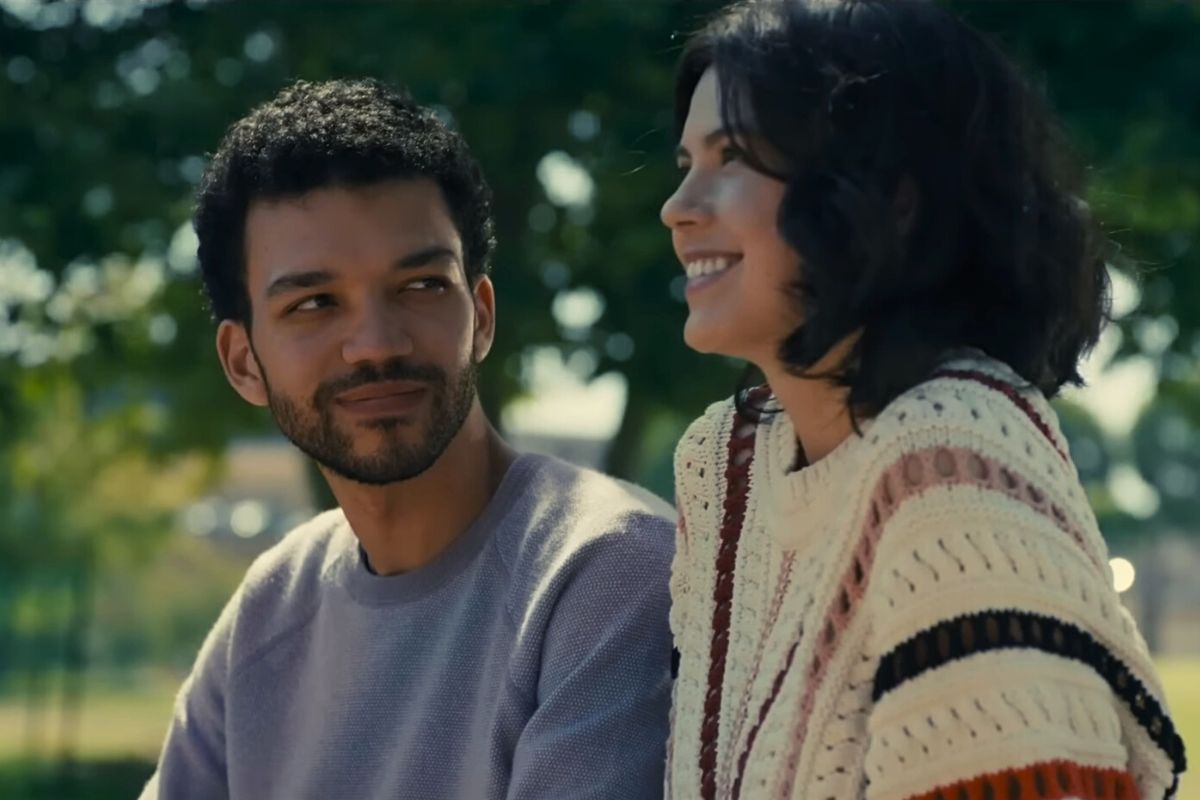A Defense of ‘The American Society of Magical Negroes’ Trailer

It’s fairly uncommon to see a dramatic shift in public opinion between the release of a teaser trailer and the full trailer. However, this appears to have happened with The American Society of Magical Negroes.
Writer/director Kobi Libii’s satirical film ASMN follows the recruitment of Aren (Justice Smith) into an organization of self-described magical negroes. The title clearly references the storytelling trope of the Magical Negro. This is a Black character who exists in a story to help a white protagonist’s personal journey—oftentimes through mystical means. Spike Lee has been credited for coining the phrase in criticizing films of the late ‘90s. However, these tropes continue to exist across media. This trope reared its head in the 2019 Maleficent sequel and in 2020 in The Queen’s Gambit. Currently, there’s a debate as to whether or not Chiron of Percy Jackson and the Olympians is a Magical Negro.
Based on the trailer and descriptions, satirizing this trope is a core element of Libii’s film. This became a major point of frustration when the first full trailer dropped a few weeks back. Across TikTok, YouTube, and “X” (Twitter), the criticism—excluding anti-Black racism—centers around a few things. One major point being that this movie wasn’t the “Black Harry Potter” that some wanted. (Some people also had this criticism at the end of the teaser.) However, that chorus grew exponentially when the full trailer crystalized the trope was a central element of the film. Even some who understood the trope believed the title was a play on words and are expressing disappointment. The second biggest complaint I’ve seen online is a little bit more complicated.
Another complicated topic enters the ring
Critics of the ASMN’s trailer point to the newly revealed major conflict of Aren falling in love with a white woman his white ward has a crush on. However, the currently unnamed love interest isn’t white. More than a quick glance or name check of the actor playing the role, An-Li Bogan, makes that clear. Bogan is biracial Asian/white. Because ASMN isn’t an adapted work, it’s unknown if her Eurocentric features influenced her casting. (This is a common issue with half-white biracial castings.) However, Bogan is clearly an Asian woman and it’s wrong to call her white.
While there are cultural nuances in how Bogan is racialized, ultimately to some people it doesn’t matter. An interracial dynamic still frustrates people because it’s another Black lead with a non-Black woman in a movie lampooning the devaluing of Black characters and experiences. The pairing up of a Black character with a white (or white-passing) character is another media trope—studios prioritizing interracial relationships where one person is white. (It’s almost as common as the colorist trope of a Black couple with a lighter-complexioned wife.) When many people hear the word “interracial” they think of a POC with a white person.
There’s a disproportionate representation of white/black hetero relationships in both algorithmic and curated media. This dynamic reflects my life experiences, but not the majority of Black people. A 2015 Pew Research Poll showed that of the 10% of married couples who were interracial, 11% were between a white and Black person. So, roughly 1% of all marriages. This poll data has several issues, like the lack of clarity around “multiracial” and “Hispanic.” Additionally, it doesn’t include non-married couples. And yet these numbers aren’t too different from other studies. Regardless: film, TV, and advertising depict a commercially friendly, post-racial world in which one out of every few white people is partnered with a non-white, often multiracial person.
And, another genre, too
Even since that poll, most (but not all) on-screen romances between interracial couples featured a white person. Hollywood executives have little to no faith in films that don’t star big-name, white actors. If it’s a rom-com or features a romance that means one “has” to be white. Some might genuinely want to add diversity and see an interracial relationship alone as progressive. However, they pat themselves on the back after carelessly writing in or casting a leading POC by not considering how their race (or other marginalization) might change the story. Creatives fail to address the context or tropes associated with these characters. While I’ve mostly centered hetero media, LGBT+ media doesn’t get much better.
Having ASMN show one of the first (adult) Asian and Black on-screen romances since the few of 20+ years ago—which include Cinderella, Mississippi Masala, and Romeo Must Die—should be a refreshing change. Instead, it adds to the frustration about centering whiteness because of people’s perception of Bogan. This has resulted in ire towards three POC (Smith, Bogan, and Libii) and pointing to their biracialness as the issue rather than the film industry.
When I saw the full trailer drop, I did leave it feeling way less excited than the initial teaser. For one, there’s concern about how a romance will take away some of the story’s bite. The trailer makes the story look like a rom-com first and satire second. The hosts of Double Toasted shared this concern, going as far as to express they felt like it was a waste of this concept and title. In a film satirizing how whiteness views Black existence, Libii could address the interracial elephant in the room in an interesting way. Especially because this interracial relationship trope wasn’t the force it is now when Lee coined Magical Negro. Call me naïve, but I’m still willing to give Libii a chance to pull through against the industry odds stacked against him.
(featured image: Focus Features)
Have a tip we should know? tips@themarysue.com